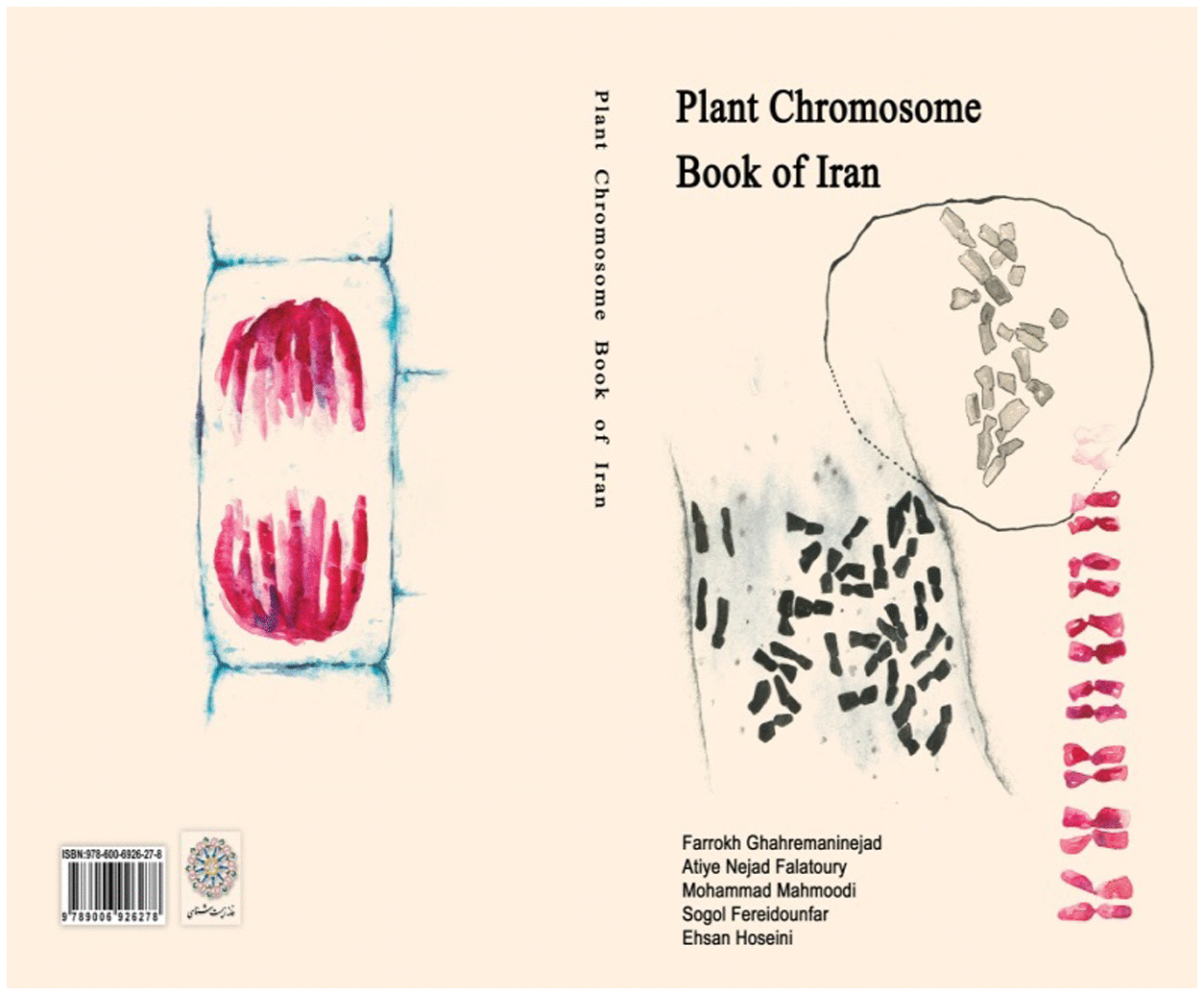Since the initiation of cytotaxonomy and the study of chromosome numbers of plants by Guignard (Citation1882) and Strasburger (Citation1882), many problematic matters such as cryptic species, ploidy-related syndromes and lineage divergences have been mitigated by this relatively simple and inexpensive method. The exclusivity of the chromosome number for each species led to extensive use of chromosome counting by various branches of biology, especially evolutionary studies and plant systematics (Love and Kjellquvist Citation1972).
 The flora of Iran comprises about 8000 species (Ghahremaninejad Citation2015), and the most varied families, regarding number of species, are Fabaceae, Asteraceae and Poaceae (Rechinger Citation1963–2012). Botanical studies on the flora of Iran have a long and interesting history, dating back to the journey of Engelbert Kaempfer to Persia in 1684 (Mood Citation2008). Since then, many Iranian and foreign botanists have focused on various aspects of Iranian plants. Based on our current knowledge, and also according to the current book, the first chromosome count of an Iranian plant was performed by Aryavand in 1975. To date, hundreds of cytotaxonomic studies on Iranian plants have been published in various scientific journals but there is no comprehensive work to summarize those scattered data.
The flora of Iran comprises about 8000 species (Ghahremaninejad Citation2015), and the most varied families, regarding number of species, are Fabaceae, Asteraceae and Poaceae (Rechinger Citation1963–2012). Botanical studies on the flora of Iran have a long and interesting history, dating back to the journey of Engelbert Kaempfer to Persia in 1684 (Mood Citation2008). Since then, many Iranian and foreign botanists have focused on various aspects of Iranian plants. Based on our current knowledge, and also according to the current book, the first chromosome count of an Iranian plant was performed by Aryavand in 1975. To date, hundreds of cytotaxonomic studies on Iranian plants have been published in various scientific journals but there is no comprehensive work to summarize those scattered data.
The Plant Chromosome Book of Iran is the first attempt to summarize the cytotaxonomically studied plants of Iran in a simple and efficient manner. The authors have considered 445 references and covered 1543 angiosperm species (of 386 genera and 66 families), six mosses (of four genera and four families) and one alga, meaning that about 20% of the flora of Iran has been studied karyologically. Unfortunately there are no recorded karyological data about the Iranian ferns and gymnosperms.
The cover is well designed and the quality of book binding is good.
The book opens with a brief preface followed by a two-page introduction, revealing how it may be useful as a regional database for plant chromosome studies. Firstly, many cited articles were not written in English or French originally, but in Persian. Thus, their contents were not accessible to non-Persian readers. Secondly, many cited articles were not published or indexed in digital form, also limiting their availability. Thirdly, many articles and their results were not covered by global databases, e.g. the index to plant chromosome numbers (IPCN). The gap between data production at a local scale and data processing on the global scale reduces the interconnection between scientists around the world. Local indices such as the Plant Chromosome Book of Iran help worldwide networks to gather relevant data more efficiently and act as mediators between local scientists and global databases.
The book has a simple structure which aids usability. The main content is divided into two parts which are not fully separated: seed plants over 153 pages, and non-seed plants over three pages. Plant families are sorted alphabetically in the first part, starting with Amaranthaceae and ending with Xanthorrhoeaceae. The genera belonging each family are also sorted alphabetically. The second part begins with mosses, followed by algae. The limitation of these taxa is based on APG III. Each informative entry is connected to a species, so infraspecific taxa are merged and are not numbered separately.
The book provides a conclusive database of cytotaxonomical studies on each taxon. For example, Alyssum minus (L.) Rothm (Brassicaceae), entry number 477, has been studied once: 2n = 24. It has a recorded variation, var micranthum, the chromosomes of which were counted twice, resulting in three different chromosome numbers: 2n = 16, 32 and 36. So entry number 477 includes four different chromosome numbers, obtained by three separate studies. Each result has been referenced, and a reader could easily find the original work for further information.
The Plant Chromosome Book of Iran is not faultless or completely comprehensive. However, it is an important effort to construct an inclusive frame for scattered cytotaxonomical studies and their data. The availability of such regional indexes will prevent unnecessary repetition of chromosome counting of certain species and will help researchers to choose their subjects more effectively.
This book is a useful reference for researchers working on the cytotaxonomy of the plants of Iran. We hope that the authors continue their project and update their valuable database periodically and with yet more precision.
Department of Plant Biology, Faculty of Biological Sciences, Kharazmi University, Mofatteh Avenue, Tehran, Iran
[email protected]
[email protected]
© 2015, Maryam Norouzi and Arezoo Ebrahiminia
http://dx.doi.org/10.1080/00087114.2015.1109938
References
- Ghahremaninejad F. 2015. Notes about Astragalus (Leguminosae) in Iran. Ann. Naturhist. Mus. Wien. 117B:279–281.
- Guignard L. 1882. Recherches sur le développement de l'anthère et du pollen des Orchidées. Ann Sci Nat Bot VI. 14:26–45.
- Love A, Kjellquvist E. 1972. Cytotaxonomy of Spanish plants. I. Introduction. Pteridophyta and Gymnospermae. Univ Sevilla: Lagascalia. 2(1):23–35.
- Mood SG. 2008. A contribution to some ethnobotanical aspects of Birjand flora (Iran). Pak J Bot. 40(4):1783–1791.
- Rechinger KH, editor. 1963–2012. Flora Iranica. Graz: Akademische Druck und Verlagsanstalt (pp. 1–174); Wien: Naturhistorisches Museum (pp. 175–179).
- Strasburger E. 1882. Über den Teilungsvorgang der Zellkerne und das Verhältnis der Kernteilung zur Zellteilung. Arch Mikr Anat Bd. XXI:476–588.
